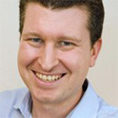by Richard Hollis
Neck pain affects many people each year and it is one of the most common complaints reported by patients at our practice. The neck supports the weight and movement of your head, so the amount of driving, computer work and similar activities you do each day can cause neck problems to occur.
If you have poor posture or carry our repetitive bending, lifting or manual work for a long period of time, this can cause neck pain. A sudden trauma or accident can also lead to conditions such as whiplash, which also cause pain in the neck area. Neck problems can be caused by pressure on the nerves that run into the arms too – this can lead to arm and hand pain and, on occasion, pins and needles or numbness.
At Broadgate Spine Centre, we take an interdisciplinary team approach when dealing with spine and joint problems. In the first instance, patients with neck pain will see a chiropractor, who will carry out an initial assessment and decide on a suitable approach to the patient’s care.
During this initial assessment, the chiropractor will look at the history of the neck problem along with the patient’s medical history. A physical examination, including relevant orthopaedic and neurological tests, will determine if the patient should be treated by the chiropractor or referred to a separate member of the Broadgate team, such as the rheumatologist or the spinal surgeon.
Even if the patient is treated by the chiropractor, they may still be co-managed with another Broadgate team member to ensure a fast and full recovery. Most commonly, this will be the GP, who helps with pain relief, or the physiotherapist, who can assist with rehabilitation exercises.
Before a patient begins their treatment, the chiropractor will explain the nature of the neck problem, what your treatment will involve and how long recovery is expected to take.
Typically, treatment of neck problems will consist of a combination of the following evidence-based techniques: mobilisation and manipulation, soft-tissue techniques, such as stretching and trigger-point therapy, and sometimes acupuncture needling. The techniques used will depend on the nature of the neck problem.
Exercises and postural advice can also be given to aid recovery from the current problem and lower and the likelihood of it reoccurring in future.
To read more about a Chiropractors approach to neck pain, click here.




